You can sort the documents in the resource library using the filters below. Filters can be used singly or in combination. You can reset the filters at anytime using the "Reset" button. The search function at the top of the page is also available. If you would like to submit a publication to the resource center, please send it to childrenandaids@unicef.org
| Document | Download | Description | Year | |
|---|---|---|---|---|
| |
Good Practice Guide: Integrating peer support into service delivery | This guide developed by Pediatric-Adolescent Treatment Africa (PATA) draws on lessons learned on integrating peer support strategies across several programmes in sub-Saharan Africa. |
2020 | |
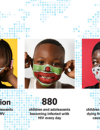
|
2020 World AIDS Day Report.pdf | UNICEF's 2020 World AIDS Day report presents key global data and an overview of the HIV epidemic among children and adolescents, focusing on UNICEF's contribution to HIV prevention, treatment and care services in the globa |
2020 | |
| |
UNICEF mental health during COVID-19 in East Asia and the Pacific | Mental health and psychosocial support (MHPSS) is a priority area for the UNICEF East Asia and Pacific Regional Office (EAPRO). |
2020 | |
| |
UNICEF-ESA-Young-Mothers-HIV-Report-2020.pdf | Adolescent and young mothers are a priority population for UNICEF in Eastern and Southern Africa, including those who are affected by HIV. |
2020 | |
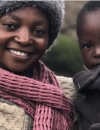
|
A spoonful of Shuga: Life and love among young people in Botswana , Steering adolescents and young people on the path to good health in Lesotho | In partnership with the Global Fund for AIDS, Tuberculosis and Malaria, UNICEF has supported the governments of Botswana and Lesotho to implement targeted programmes for adolescent girls and young women. |
2020 | |
| |
Operational Guidance for National Roll-Out of Family HIV Testing , Directives operationnelles pour la mise à l'échelle nationale du depistage familial du VIH | HIV testing and treatment remains low among children in West and Central Africa. Various barriers prevent the scale-up of services and improved coverage for children, including limited coverage of early infant diagnostic c |
2020 | |
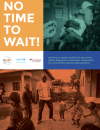
|
No Time To Wait - advocacy brief , No Time To Wait Strategic Framework - English , No Time To Wait Strategic Framework - French , Summary of 2020 Joint UCPOC Communications Activities , Summary of 2019 Joint UCPOC Communications Activities | This framework has been designed for CSOs to help you plan your work around infant HIV testing. |
2020 | |
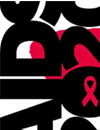
|
AIDS 2020 conference report - summary of selected sessions FINAL.pdf | Business unusual: Catalytic innovations to accelerate HIV results for pregnant women, children and adolescents. 6 July 2020 - Convened by UNICEF | 2020 | |
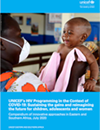
|
UNICEF’s HIV Programming in the Context of COVID-19 | Recognizing the harmful impact that COVID-19 and related lockdown measures pose for the HIV response, governments across ESA region are implementing interventions to sustain hard won gains toward ending AIDS. |
2020 | |
| |
Nurturing care for children affected by HIV | In the early years, we lay down critical elements for health, well-being and productivity, which last throughout childhood, adolescence and adulthood. |
2020 | |
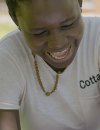
|
New Evidence and Programming Implications for Adolescent Pathways in HIV Care in Sub-Saharan Africa 2020.pdf | Adolescents have the lowest rates of retention in HIV care and ART adherence when compared to other age groups. |
2020 | |
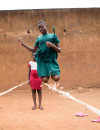
|
AGYW catalogue of available documents (spreadsheet) , AGYW repository navigation (slides) | The AGYW Programming & Implementation Repository contains resources relevant to AGYW programming that have been collated to support enhanced implementation and programming of Global Fund Catalytic Funding for HIV preve |
2020 | |
| |
AIDS 2020 Roadmap , HIV 2020 full programme Jul-Oct 2020.pdf | The full programme of the alternative community-led HIV 2020 conference with events from July to October, 2020 is also available for download. |
2020 | |
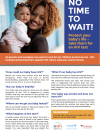
|
Caregivers FAQ - No Time to Wait! | As parents and caregivers we want to care for our children as best we can - this includes protecting them against HIV. Here’s what you need to know. |
2020 | |
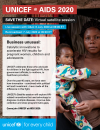
|
UNICEF Satellite - Business unusual: Catalytic innovations to accelerate HIV results | 2020 | ||
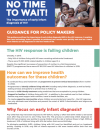
|
Policymakers Fact Sheet - No Time to Wait! | This guidance outlines the importance of early infant diagnosis (EID) in the HIV response. |
2020 | |
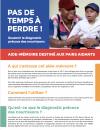
|
Aide-mémoire destiné aux pairs aidants | Est-ce que vous travaillez avec des personnes vivant avec le VIH ? Vous dirigez peut-être un groupe de soutien pour les femmes vivant avec le VIH ou des séances de préparation à l’accouchement ? |
2020 | |
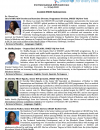
|
AIDS 2020 UNICEF Spokespersons.pdf | 23rd International AIDS Conference 6 – 10 July 2020 |
2020 | |
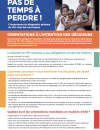
|
Orientations a l'intention des décideurs - NO Pas dea Tempsa A Perdre.pdf | Ces orientations soulignent l’importance du diagnostic précoce chez les nourrissons (EID) dans la riposte au VIH. |
2020 | |
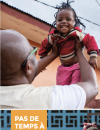
|
Affiches aux parents et aux soignants.pdf | As parents and caregivers we want to care for our children as best we can - this includes protecting them against HIV. Here’s what you need to know. |
2020 |